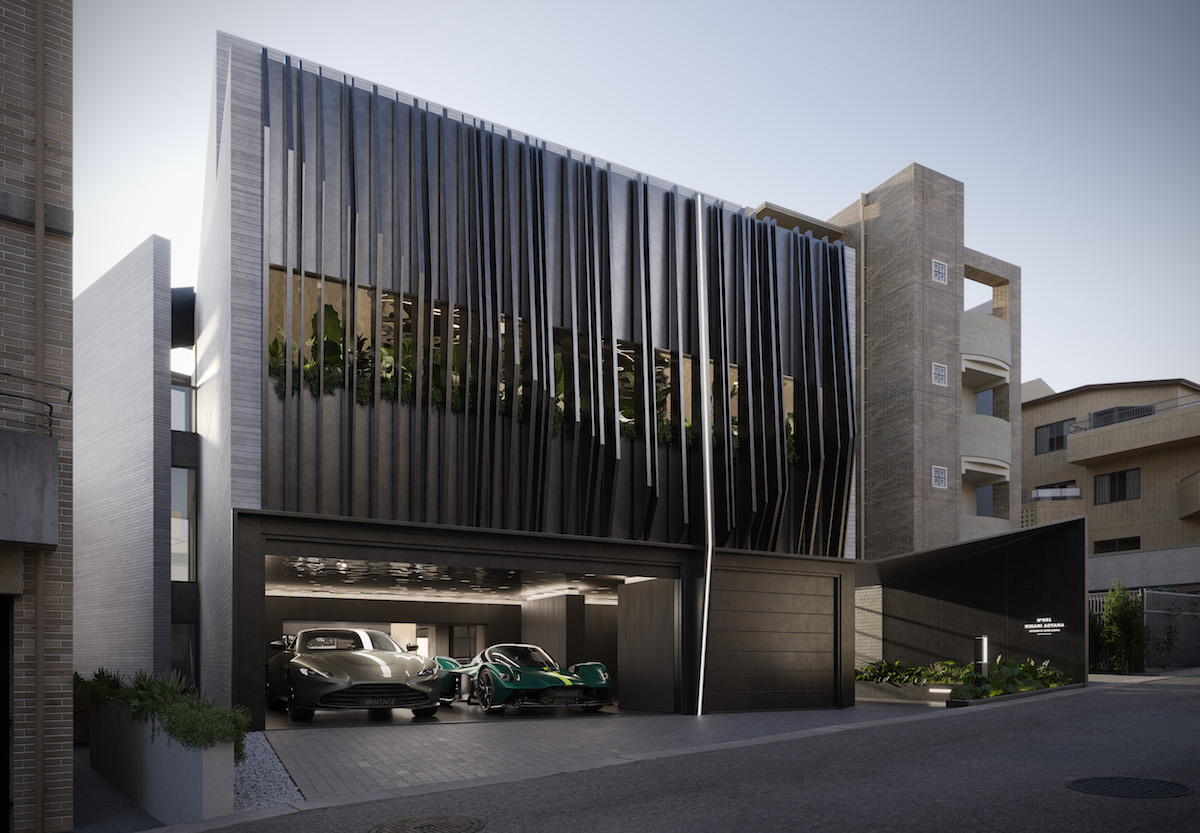The address No. 001 Minami Aoyama is situated in an upscale Tokyo neighborhood dotted with eclectic galleries, cafes and boutiques housed in extraordinarily creative buildings.
An art museum – with a beautiful Japanese garden on its grounds – sits behind a wall of bamboo. Within walking distance, the buzzy streets of quirky Harajuku and Omotesando’s sweeping designer thoroughfares are packed with people – clear evidence the megacity’s come back to life with a vengeance.
Tucked into a side street in what press materials call “one of Tokyo’s foremost architectural and style centers”, Aston Martin’s latest residential project marks the luxury performance brand’s first in Asia.
“Minami Aoyama is incredibly peaceful for an area that’s right smack bang in the middle of the largest, most hyperactive city on the planet,” says Director of Partnerships Cathal Loughnane.
“Tokyo’s neighborhoods kind of flow from one thing to the next, one type of district to another. That’s why it’s amazing. You can go from a full luxury shopping district into the quietest residential street in 100 meters, which you just don’t get anywhere in the world.”
The property was conceived in-house by the acclaimed Aston Martin Design team – the entity that drafts the brand’s other residential ventures, as well as all of their dealerships. In collaboration with Vibroa, a leader in Japanese real estate, and a local, on-the-ground construction company, it will become a reality.
Aston Martin Executive Vice President and Chief Creative Officer Marek Reichman calls the project a “unification of two ultra-luxury lifestyle organizations with a shared passion for combining cutting-edge design and technology with traditional hand craftsmanship.”

Masterful luxury design
The striking four-story home is all clean lines, wood and glass, elements of geometry. The British automaker’s design principles – with a uniquely Japanese influence – are reflected throughout.
An ultra-modern facade delivers privacy yet demands a second look. Huge windows create seamless transitions to the outside world.
It’s a rarity in a city where space is at such a premium. Tokyo’s zoning laws – more relaxed than those in other cities – mean shiny new buildings often crowd up against charming storefronts from another time.
Business towers, izakaya (informal bars), tiny homes and ubiquitous convenience stores are wedged, stacked and mashed together. An empty bit of land, however awkwardly shaped, is an invitation to build.
“Normally, on a plot this size in Tokyo, you’d be building multi-family homes. The neighbors don’t believe it’s going to be one home. They’re expecting it to be four or five apartments,” Loughnane says.
“For Tokyo, it’s extraordinarily luxurious.”
Inside, dark wood, lots of natural light and a spacious floor plan create the feel of a minimalist sanctuary. Amenities include a wine cellar, home cinema, gym, private spa and an outdoor onsen-like tub.
A rooftop garden overlooks the surrounding city. And of course, an automotive garage-cum-gallery displays the new owner’s car collection, which can be viewed from the dining room through a glass wall.
Later this year, after about five years of preparation and one year of designing, construction is expected to wrap and a private buyer will move in.
“This is our first project where we knew the owner from the beginning. They’ve been very much involved,” Loughnane says.
The project’s now coming down to the final details and custom elements – the carpeting and light finishes, the ideal shade of the wood and the perfect finish on the stone.

High-tech precision meets handcrafted elegance
“Every country has their own unique vision of the car. But Japan is one of the real standouts,” Loughnane says.
“The car culture in Tokyo is incredible – from the drift culture and the tuning culture to the crazy stuff like the Bosozoku and extreme cars.”
Some of Aston Martin’s most enthusiastic collectors are in Japan. One of the first Valkyrie AMR Pros was delivered there. One of just 25 existing DB-5 Continuation cars (complete with all the James Bond gadgets) is in Tokyo as well.
Aston Martin’s work in Japan is a natural culmination of appreciation for impeccable design, both old and new.
The distinct influence of the country, its style, culture and history, holds an important creative space within the automaker’s design studio. And through cars, architecture or something else entirely, fine craftsmanship has been revered in Japan for centuries.
“Japan has an extraordinarily strong design culture,” Loughnane says, referencing the gleaming machines in the automotive gallery, balanced by features crafted through a millennia-old process that’s been handed down through generations.
“There’s this incredible contrast in a culture that’s extremely forward-thinking, extremely innovative, but also has incredible respect for the ancient traditions and is investing an awful lot of energy into making sure that the technologies of the future don’t erase the traditions of the past.”
Following successful residential projects in the United States in Miami, Florida and Rhinebeck, New York, there are ongoing discussions for future projects Stateside, in the United Kingdom and in Europe. Further sites are being scouted for potential homes in Japan.
“We’re fortunate,” Loughnane says. “We have far more opportunities than we have architects at the moment, which is a good place to be.”







